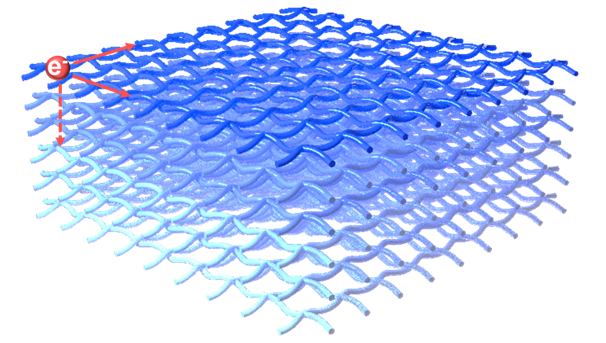An international team of researchers has synthesized a multilayer-stacked two-dimensional polyaniline (2DPANI) crystal, achieving unique metallic out-of-plane charge transport and high conductivity. The study was published in Nature.
Conducting polymers, like polyaniline, polythiophene, and polypyrrole, are celebrated for their electrical conductivity. They hold great promise as low-cost, lightweight, and flexible alternatives to traditional semiconductors and metals.
Despite their potential, charge transport efficiency, particularly between polymer chains, remains a key challenge limiting their performance and practical applications.
With the combined effort of researchers at the Ningbo Institute of Materials Technology and Engineering (NIMTE) of the Chinese Academy of Sciences (CAS), Technische Universität Dresden, Max Planck Institute of Microstructure Physics, and CIC nanoGUNE BRTA, etc., a novel 2DPANI crystal was achieved by virtue of a topology-directed 2D polymerization of aniline using an anionic surfactant monolayer on the water surface.
The 2DPANI crystal, with a domain size of 130–160 μm2 and thickness from tens to hundreds of nanometers, features columnar π arrays with a 3.59 Å interlayer spacing and rhombohedral lattices formed by interwoven polyaniline chains. This structure enables strong in-plane conjugation and interlayer electronic coupling, as confirmed by electron spin resonance spectroscopy and first-principles calculations.
The synthesized conducting polymer demonstrated a Drude-type conductivity with an extrapolated d.c. conductivity of ~200 S/cm. An anisotropic charge transport was also revealed, with out-of-plane and in-plane conductivities of ~7 S/cm and ~16 S/cm, respectively.
Remarkably, vertical devices exhibited increasing conductivity at lower temperatures, a hallmark of metallic out-of-plane transport.
This crucial advancement in conducting polymer research addresses the limited charge transport issue caused by insufficient structural ordering and electronic coupling. The study also provides insight into the three-dimensional metallic conductivity, unlocking new possibilities for electrodes, electromagnetic shielding, and sensors.
The study was supported by the National Natural Science Foundation of China (No. 52322316) and the Excellent Youth Foundation of Zhejiang Province of China (No. LR21E030001), etc.

Fig. The efficient charge transport in multilayer-stacked 2D conducting polymers (Image by NIMTE)
Contact
ZHANG Tao
Ningbo Institute of Materials Technology and Engineering
E-mail: tzhang@nimte.ac.cn

